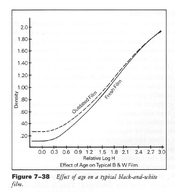You read the title. So how about it?
Latent image fades much faster in the first minutes and hour after exposure, until it reaches a very slightly slanted plateau. A plateau that stays ≈ level for months and even decades esp. with freezing.
But, what if you developed the film very quickly after exposure? As in minutes after. How many potential stops to be gained? One? Two?
What would the difference be between fast and slow film?
The obvious answer would be “experiment”. But I don’t have the time or inclination right now. I’m looking for someone who has done the experiments or can point me in the direction of som data or articles.
Latent image fades much faster in the first minutes and hour after exposure, until it reaches a very slightly slanted plateau. A plateau that stays ≈ level for months and even decades esp. with freezing.
But, what if you developed the film very quickly after exposure? As in minutes after. How many potential stops to be gained? One? Two?
What would the difference be between fast and slow film?
The obvious answer would be “experiment”. But I don’t have the time or inclination right now. I’m looking for someone who has done the experiments or can point me in the direction of som data or articles.
Last edited:











